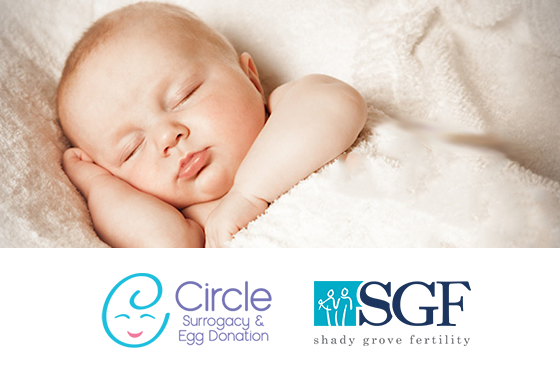Gestational Carrier
In the case of a gestational carrier, the person carrying the pregnancy is in no way biologically or genetically related to the child they are carrying. They are merely providing a nurturing environment in the form of a uterus for the child to grow for the gestational period of, ideally, 40 weeks. A gestational carrier is not a traditional “surrogate,” as a surrogate is someone who donates their egg and then subsequently carries the child.
The Basics
Candidates for using a gestational carrier
A gestational carrier is required for any individual or couple — heterosexual or same-sex — in which the patient cannot carry the pregnancy. This may result from conditions in which the patient had their uterus surgically removed — such as in the case of cervical or uterine cancer, fibroids, severe endometriosis, or conditions requiring a hysterectomy. In other cases, the patient may have an intact uterus, but the uterus still may not be able to carry a pregnancy to term. Medical conditions such as severe diabetes may also be a reason for using a gestational carrier. A physician will obtain the eggs from the intended parent or from an egg donor.
Same-sex couples with male reproductive organs will also work with a gestational carrier, egg donor, and most often one of the partner’s sperm to conceive.
Gestational carrier autologous
In all autologous cases—where the intended parent plans to use their own eggs—the recipient couple or individual will undergo screening via the standard infertility work-up, in addition to the requirements of the U.S. Food and Drug Administration (FDA). Shady Grove Fertility will treat the patient as a traditional in vitro fertilization (IVF) patient, with the cycle culminating in egg retrieval. The egg and the sperm will then be fertilized in the lab and a physician will transfer the embryo to the gestational carrier.
Gestational carrier with donor egg
If a patient is unable to conceive using their own eggs, the intended parents can also use donor egg treatment. A physician will then transfer the embryo to the gestational carrier. In the case of same-sex couples with male reproductive organs, once the couple has identified both a gestational carrier and an egg donor, one or both partners will provide sperm samples to inseminate the donated eggs. While the goal of every pregnancy is a singleton, or one baby, these couples may opt to transfer back one embryo from each partner if their gestational carrier agrees. However, as twin or higher-order multiples present potentially higher risks to the babies and the gestational carrier, Shady Grove Fertility does not advise this, for safety reasons.
What to expect
How to get started
Step 1: Schedule a new-patient appointment with a reproductive endocrinologist at Shady Grove Fertility to review history and determine treatment plan.
Step 2: If the plan is to proceed with a known gestational carrier, your donor nurse will schedule her for a consult at Shady Grove Fertility. If you are choosing a gestational carrier you do not know, your donor nurse will direct you to an attorney or agency to start the recruiting process.
Step 3: Your health care team will outline the necessary screening for all parties.
Step 4: Shady Grove Fertility must receive confirmation of legal counsel and contracts prior to the start of the fresh cycle.
The gestational carrier cycle process
Intended parent
The intended parent couple will be undergoing an IVF cycle if they are using their own eggs. If they’re using an egg donor, the donor will undergo an IVF cycle. This is a cycle where we will use high doses of the same hormones that are secreted by the brain each month (that normally stimulate one ovary to produce one egg) in order to get both ovaries to produce many eggs (usually 10 to 20).
Donors will receive these hormones (follicle-stimulating hormone [FSH] and luteinizing hormone [LH]) via subcutaneous injections (using small needles given directly into the fatty tissue underneath the skin). The patient will be monitored in the office with transvaginal ultrasound frequently to measure the size of the developing follicles (the fluid-filled sacs that contain the eggs) until they reach a size of 18 to 20 mm. They will also have their blood tested for estradiol levels as well.
Once the lead follicles reach 18 to 20 mm in size, they will need an intramuscular injection to “trigger” egg maturity, and in 36 hours exactly, a physician will retrieve the eggs transvaginally.
The eggs will then be brought into the lab. We will thaw the intended parent’s sperm that was previously frozen and an embryologist will inject one normal appearing sperm into each mature egg, via a procedure called intracytoplasmic sperm injection (ICSI). The embryos will then be allowed to grow in the lab and the physician will transfer a certain number of embryos (depending on embryo quality and age of the intended parent or egg donor) into the gestational carrier.
Gestational carrier
While the intended parent is undergoing the IVF cycle, the gestational carrier will receive estrogen and progesterone in sequential fashion via intramuscular injections, in order to prepare the uterine lining for implantation.
Before starting this prep, the gestational carrier will come in to be sure the uterine lining is thin and ovaries have no cysts. If everything looks normal, they will start the estrogen. Approximately 2 weeks later, they will come in for another transvaginal ultrasound and bloodwork to be sure the lining is developing adequately. If so, the gestational carrier will start the progesterone when instructed by their nurse.
In order to be sure that they respond adequately and develop a lining that is perfectly primed and ready to support a developing embryo, they will undergo a “mock” cycle first, which is a practice cycle. The mock cycle involves injections of estrogen, followed by a mid-cycle uterine evaluation to confirm the endometrial thickness is appropriate. If the lining is not favorable, the physician will make adjustments for the fresh cycle.
After the mock cycle and all of the pre-screening bloodwork and psychological screening is complete, the real cycle can begin.
Timeline
From the time the intended parent and gestational carrier are initially seen for consultation, it generally takes 4 to 6 months to complete the necessary pre-screening and fresh cycle. If a patient is working with an attorney or agency to recruit a gestational carrier, it can take an additional 6 to 9 months to recruit a gestational carrier.



